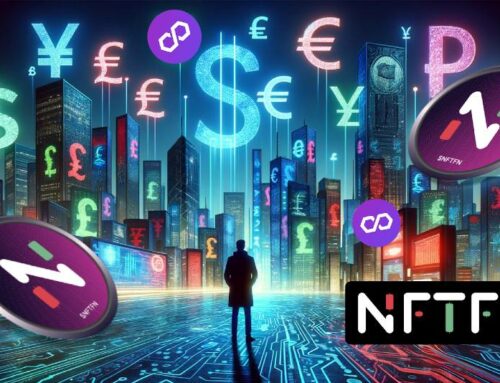How Can We Embed Traditional Payments Into Crypto Platforms to Bridge the Gap Between Web2 and Web3?
For Web3 to reach its full potential, fiat and crypto capital need to be more easily and securely interchangeable. Here, Fiat Republic founder Adam Bialy offers his perspective on how to move forward.
As demand for crypto continues to grow throughout the course of 2023, which is particularly positive considering the anticlimactic (and for some, almost post-apocalyptic) end of 2022, new challenges emerge in meeting this demand. Too often, we see that fiat-crypto flows are not managed well enough by crypto providers, and there’s a need to create better bridges between the worlds of Web2 and Web3. Put simply, traditional finance – TradFi – and decentralised finance – DeFi – still aren’t playing nice. Capital, in the form of fiat and crypto, needs to be more readily and securely interchangeable if we are ever going to truly unlock the full potential of Web3.
Bridge 2.5
I’ve talked about this a bit in the past but it feels like there’s continually the need to bring this narrative back. The transition from Web1 to Web2 was chiefly driven by aggregators and online wallets like PayPal, who transformed the payments landscape and redefined what was possible fuelling the rise of e-commerce and internet transactions. Suddenly, merchants and customers both had access to digital cash, and we were able to trade goods and services online at lightning speed. In hindsight, this transition was fairly obvious – a shift from bricks-and-mortar to online real estate, be it the marketplace of eBay or the shopfronts of Shopify.
Yet, as we slowly but steadily edge into Web3, the differences become more nuanced. Web3 currently relies much more heavily on Web2 infrastructure than some crypto players perhaps realise; a ‘reality check’ kind of problem muffled by some crypto maximalists’ desire to become completely independent from the yoke of traditional finance. The demand for a bridge, the ‘Web2.5’, however, always was and still is there. Never was this more obvious than in the past couple of months when due to major sentiment shifts against crypto amid a major downturn, crypto providers struggled like never before to facilitate payments into and out from the world of web3, mainly due to traditional banks’ continued reservations about the space as a whole.
In the crypto frenzy of previous bull markets, companies like Ramp and MoonPay, which offer full stack fiat-to-crypto and crypto-to-fiat conversions, flourished.
Integration with Fiat Providers
The development of crypto as an industry isn’t a standalone process — it leans heavily on alliances with fiat and traditional payment providers, often banks. Even though top-tier banks possess the necessary infrastructure, their collaboration is frequently stymied by a protectionist approach. Crypto companies therefore turn to second or third-tier banks willing to shoulder more risk, but who perhaps lack the sophisticated operational efficiency needed to maintain the already massive fiat-crypto flows. These relationships, as tentative as they are, often command sizable risk premiums and can be abruptly dissolved due to changes in risk appetites. This presents an interesting paradox: while crypto based businesses are in desperate need of banking services, the traditional banking world remains largely aloof or, worse, succumbs to the illusion that they can do this (offer crypto services) themselves!
Here’s where APIs and aggregators armed with the right banking partners, could usher in change, opening gates to both local and international payment channels. Compliance also has a starring role in this transformation — securing regulatory approval, such as an EMI licence, could expedite the transition between crypto and fiat currencies, solving one piece of the puzzle.
Ensuring Transparency
Transparency has become a pivotal talking point, especially in light of advancements in fintech infrastructures designed to bridge traditional banking systems and the crypto universe (and the aforementioned upheaval of the past 6 to 8 months). In order to foster trust and a culture of transparency, it’s essential that crypto platforms actively engage with regulatory bodies and facilitate transactions through proper ‘regulated’ channels, something we absolutely champion at Fiat Republic. Adherence to regional regulatory standards can not only enhance user confidence, but also layer on additional security for user deposits.
Strengthening the treasury management protocols for crypto enterprises is an essential future consideration, particularly to increase the efficiency and transparency of fiat-crypto flows. Users need to be well-informed about the movement of funds from their accounts to the platform during transactions, a practice that’s in line with the transparency seen in conventional finance institutions. Enhanced communication strategies, such as timely notifications about fund arrivals, can assist in achieving this. Additionally, it’s crucial that transactions are expedited. Delays in withdrawals or deposits can cause users to question the security of their funds and ultimately abandon their desire to engage with web3 altogether!
Bridging Payments
In regions such as the UK and the EU, users demand a comprehensive range of payment options that reflect the overall level of maturity of the local payment ecosystems. These expectations already include open banking, debit/credit card payments, Faster Payments and SEPA/SEPA Instant. Digital currency platforms must meet these user expectations to secure incremental growth of their ventures whilst, at the same time, conforming to local regulations.
The standardisation of access to these payment methods is vital. This is especially true for bank transfers – which now finally have the ‘instant gratification’ element of card payments (Faster Payments and SEPA Instant) at a tiny fraction of the cost per transaction. That’s why instant bank transfers have the potential of creating a meaningful link between Web2 and Web3 ecosystems.
I have previously stressed the need for trusted bridges between banks and crypto platforms. The challenges in creating these bridges are noteworthy and the biggest one of them is lack of trust. Without trust, the utility of any bridge is severely compromised, leading to user hesitation and huge inefficiencies. Many banks remain sceptical of existing bridges due to regulatory risks and lack of visibility of KYC data when facilitating crypto-fiat transactions. These hurdles become very obvious when, for example, a bank has to facilitate an instant transfer for their customer for the purpose of buying or selling crypto. Lack of trust can turn an otherwise instant SEPA transaction into a 2-week long affair with the bank(s) in the middle questioning their own customers’ intentions at best, identity or source of funds at worst.
However, companies are emerging that are able to provide a "golden standard" bridge, which is comprised of three pillars: a systemic KYC reliance model, streamlined onboarding, and robust transaction monitoring with data sharing links to all participants in a crypto-fiat transaction. These pillars ensure comprehensive regulation of all network participants, save time and resources, and provide banks with the necessary confidence to track money flows on a day-to-day basis. These companies are not just establishing a trusted bridge between traditional finance and crypto, but they are also enhancing the visibility of money flows and maintaining a balance between end-customer privacy and financial security.
It is important that providers that act as intermediaries between Web2 and Web3 are championed. They are instrumental in fostering trust, transparency, and efficiency of fiat-crypto flows, ultimately bringing together the benefits of both systems for users and institutions and unlocking the next frontier of financial innovation.
About The Author
 |
Adam Bialy is the founder and CEO of Fiat Republic, the compliance-first, API-driven and highly secure and scalable bridge between banks and crypto. He has more than 14 years’ experience in high-growth payments startups and banks. Previous roles include ex-Sainsbury’s Head of Payments, ex-CPO of OpenPayd, as well as senior product roles at Raiffeisen Bank, Ukash, HyperJar and Onvi. |
Editorial Note: This press release is made possible by MVPR.

Don’t miss out – Find out more today



